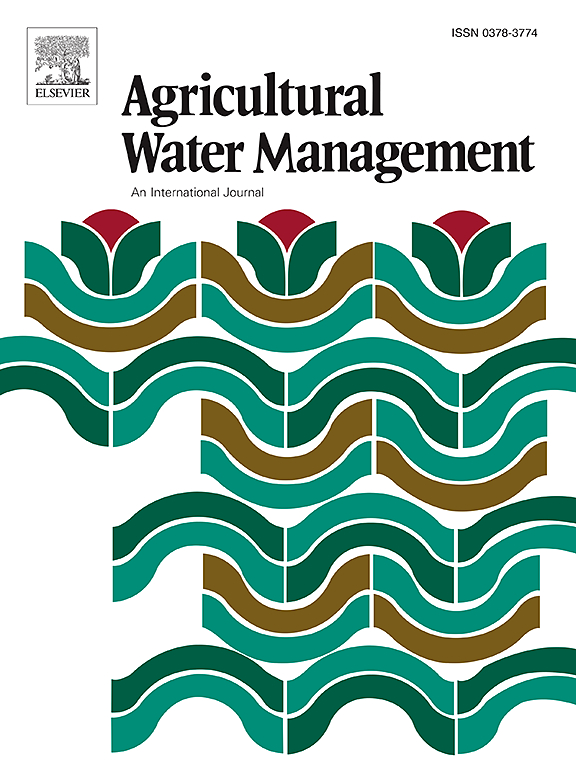用于食用作物灌溉的循环水中的药物和个人护理产品:了解发生、作物吸收和水量影响
IF 5.9
1区 农林科学
Q1 AGRONOMY
引用次数: 0
摘要
全球缺水给农业生产带来了巨大挑战。再生水为农业灌溉提供了一种前景广阔的替代方案,但再生水中残留的药物和个人护理产品(PPCPs)会在灌溉过程中转移到可食用作物中,对食品安全造成不利影响。此外,灌溉水量也会影响 PPCPs 在可食用作物中的积累。本研究通过对三个关键部分进行严格审查,全面调查了农业灌溉中循环水的使用情况:循环水中 PPCPs 的存在、PPCPs 在可食用作物中的积累以及水量对 PPCPs 积累的影响。文献分析表明,PPCPs 在二级污水中的含量为 130-1400 纳克/升,在三级污水中的含量为 25-400 纳克/升,其中磺胺甲噁唑在这两种污水中的含量最高。叶菜和果菜对 PPCPs 的吸收和积累各不相同,叶菜中双氯芬酸的积累最高,果菜中氟西汀的积累最高。此外,叶菜类和果菜类作物在整个生长季节的需水量也各不相同。在叶菜类蔬菜中,PPCPs 在叶片中的积累受蒸腾速率的影响,在水分供应有限的情况下,由于蒸腾速度较慢,积累会减少。在果菜类蔬菜中,渗透调节驱动着果实中的水分运输,从而导致在有限的水分条件下增加 PPCPs 的积累。这项研究有助于深入了解 PPCPs 的发生、积累和灌溉水量,有助于制定农业循环水利用的有效策略。本文章由计算机程序翻译,如有差异,请以英文原文为准。
Pharmaceutical and personal care products in recycled water for edible crop irrigation: Understanding the occurrence, crop uptake, and water quantity effects
Global water scarcity poses a great challenge to agriculture productivity. Recycled water offers a promising alternative for agricultural irrigation, yet residual pharmaceutical and personal care products (PPCPs) in recycled water can transfer to edible crops during irrigation, and adversely affect food safety. Furthermore, irrigation water quantity can influence the accumulation of PPCPs in edible crops. This study comprehensively investigates the use of recycled water for agricultural irrigation by critically reviewing three key components: PPCPs occurrence in recycled water, their accumulation in edible crops, and the impact of water quantity on PPCPs accumulation. Literature analysis showed that PPCPs were present from 130 to 1400 ng/L in secondary effluent and 25–400 ng/L in tertiary effluent, with sulfamethoxazole being the most prevalent in both effluents. PPCPs uptake and accumulation varied between leafy and fruity vegetables, with diclofenac accumulating highest in leafy vegetables and fluoxetine in fruity vegetables. Furthermore, the water requirement of leafy and fruity crops vary throughout the growing season. In leafy vegetables, PPCPs accumulation in leaves is influenced by transpiration rate, with reduced accumulation occurring under limited water availability due to slower transpiration. In fruity vegetables, osmotic adjustment drives the water transport in fruits, leading to increased PPCPs accumulation under limited water conditions. This study contributes insights into PPCPs occurrence, accumulation, and irrigation water quantity, aiding in the development of effective strategies for recycled water use in agriculture.
求助全文
通过发布文献求助,成功后即可免费获取论文全文。
去求助
来源期刊

Agricultural Water Management
农林科学-农艺学
CiteScore
12.10
自引率
14.90%
发文量
648
审稿时长
4.9 months
期刊介绍:
Agricultural Water Management publishes papers of international significance relating to the science, economics, and policy of agricultural water management. In all cases, manuscripts must address implications and provide insight regarding agricultural water management.
 求助内容:
求助内容: 应助结果提醒方式:
应助结果提醒方式:


